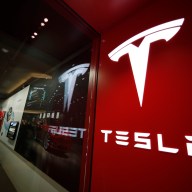Alternative technology for automobiles is here to stay. It’s only been ten years since hybrids first came to North America, but almost every manufacturer offers or is working on them, including premium companies like BMW.
The German automaker will offer its ActiveHybrid X6 Sports Activity Vehicle in Canada later this year, and its ActiveHybrid 7 luxury sedan next spring.
They’re part of the company’s overall EfficientDynamics initiative, which also includes fuel-saving lightweight construction and engine design, and alternative fuels such as diesel and hydrogen.
“We’re known for performance and sportiness, so we will never compromise that, but we are dedicated to making large strides and improvements in the reduction of fuel consumption and greenhouse gases,” says Rob Dexter, product specialist with BMW Canada’s corporate communications. “We believe that’s where the future is.”
Gasoline-electric hybrids combine a conventional engine with an electric motor and battery pack. The ActiveHybrid 7 is a “mild” hybrid: It can’t travel on battery power alone, but uses the electric motor to assist the gasoline engine, providing substantial power while using relatively little fuel.
“Full” hybrids, such as the ActiveHybrid X6, also do this, but as well, they can run solely on electricity for short distances. All of them turn off the gasoline engine when the vehicle is stopped, such as at a traffic light, so there are no emissions when idling.
Many companies are working on plug-in hybrids, which will be recharged from a wall socket, but the ActiveHybrid models, as with every other factory hybrid currently available, recharge their own batteries as they’re driving.
Battery technology is still catching up to hybrid technology, so there are some compromises, and the systems were chosen based on vehicle characteristics.
The X6 uses a nickel metal hydride (NiMH) battery. It stores enough energy to provide sporty performance, but it’s also very bulky and heavy, and needs a larger vehicle to accommodate it.
Smaller and lighter lithium-ion batteries were chosen for the 7 Series, which enabled the company to keep the car’s characteristic luxury handling and not sacrifice too much trunk space, but since they don’t offer the same driving range as the bulkier NiMH, the mild hybrid system was used.
“We think that a responsible company will respond to the concern of the general population, and the environment has a huge profile,” Dexter says. “It’s part of our philosophy to do our bit to address that.”














